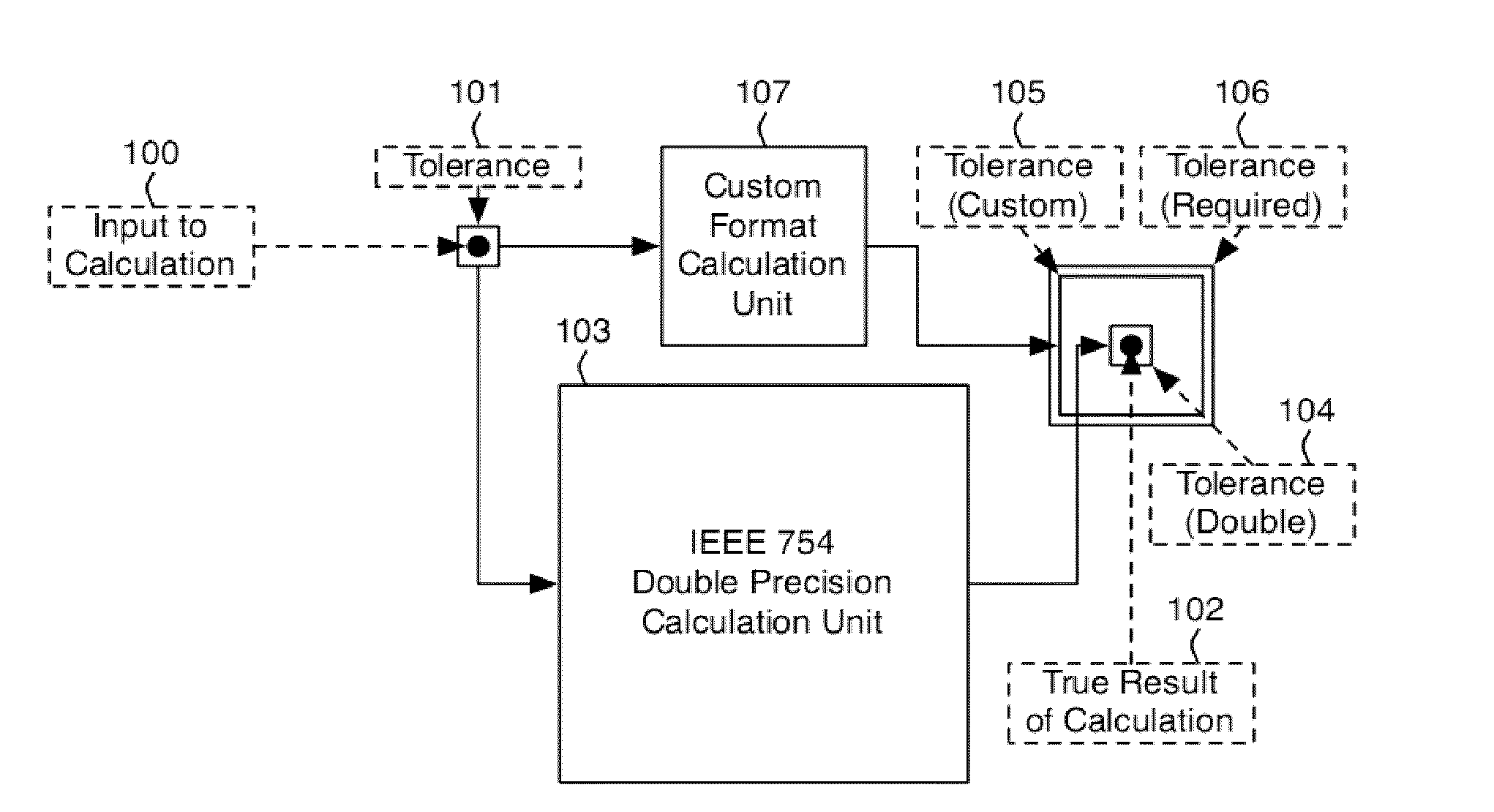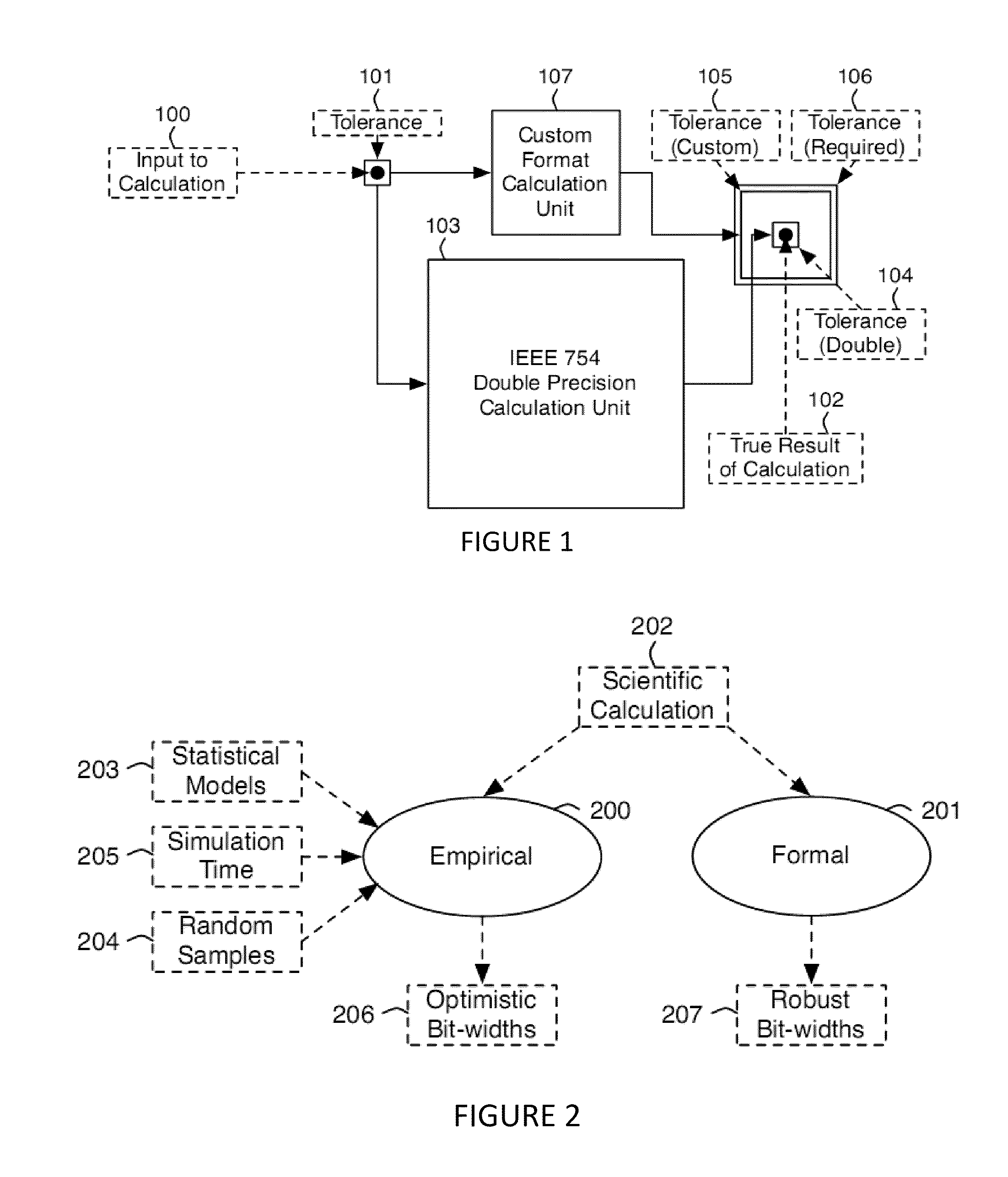Bit-width allocation for scientific computations
a scientific computation and bit-width allocation technology, applied in the field of machine computations, can solve the problems of reducing precision, limiting the parallelism and thus the performance of hardware accelerators, and high hardware costs, and affecting the convergence of such methods
- Summary
- Abstract
- Description
- Claims
- Application Information
AI Technical Summary
Problems solved by technology
Method used
Image
Examples
Embodiment Construction
[0078]The challenges associated with scientific computing are addressed herein through a computational approach building on recent developments of computational techniques such as Satisfiability-Modulo Theories (SMT). This approach is shown on the right hand side of FIG. 3 as the basic computational approach 306. While this approach provides robust bit-widths even on ill-conditioned operations, it has limited scalability and is unable to directly address problems involving large vectors that arise frequently in scientific computing.
[0079]Given the critical role of computational bit-width allocation for designing hardware accelerators, detailed below is a method to automatically deal with problem instances based on large vectors. While the scalar based approach provides tight bit-widths (provided that it is given sufficient time), its computational requirements are very high. In response, a basic vector-magnitude model is introduced which, while very favorable in computational requir...
PUM
 Login to View More
Login to View More Abstract
Description
Claims
Application Information
 Login to View More
Login to View More - R&D
- Intellectual Property
- Life Sciences
- Materials
- Tech Scout
- Unparalleled Data Quality
- Higher Quality Content
- 60% Fewer Hallucinations
Browse by: Latest US Patents, China's latest patents, Technical Efficacy Thesaurus, Application Domain, Technology Topic, Popular Technical Reports.
© 2025 PatSnap. All rights reserved.Legal|Privacy policy|Modern Slavery Act Transparency Statement|Sitemap|About US| Contact US: help@patsnap.com



